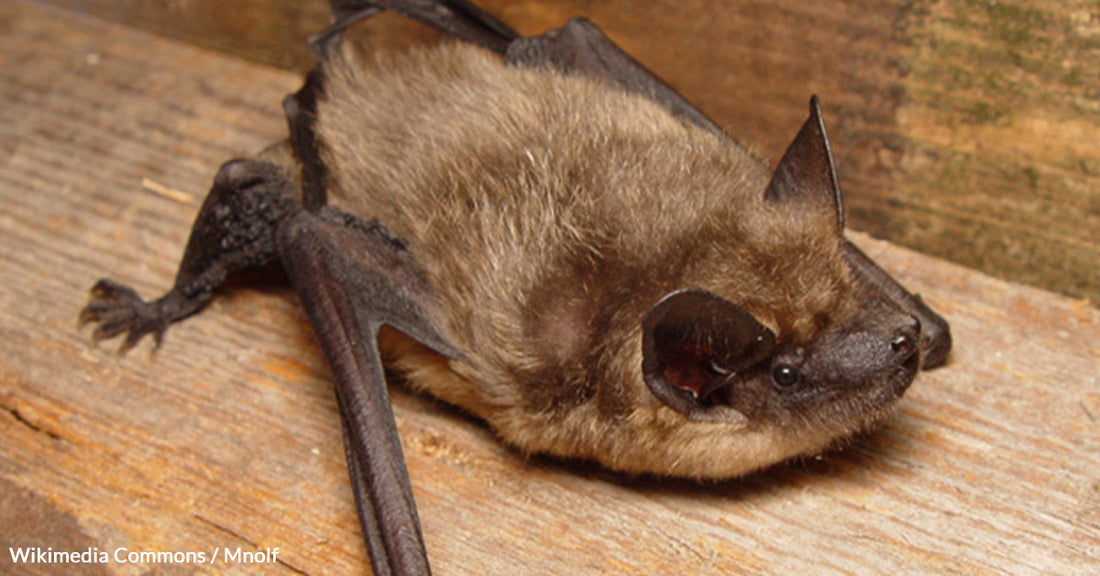Serotine Bats Challenge Conventional Science with Unique Mating Strategy
Matthew Russell
In the animal kingdom, the serotine bat stands out for its unconventional approach to mating. Recent discoveries reveal that this species, Eptesicus serotinus, may be the first mammal known to mate without using penetration.
This finding, published in Current Biology, overturns long-standing assumptions about mammalian reproduction and highlights the diversity of mating strategies in nature.
 Photo: Pexels
Photo: PexelsSerotine bats are a species commonly found in Europe and Asia.
The Remarkable Anatomy of Serotine Bats
The serotine bat, prevalent in Europe and Asia, is notable for its disproportionately large penis, which is seven times longer than the female's vagina and expands into a heart-shaped head. Such an anatomy puzzled scientists, as penetrative mating seemed implausible.
Researchers observed that the male bat uses its penis not for penetration, but as a 'copulatory arm' to maneuver around the female's protective tail membrane during mating, Phys.org reports.
The breakthrough in understanding the mating behavior of serotine bats came unexpectedly. According to CNN, Dutch retiree Jan Jeucken, intrigued by a bat colony in a local church, captured extensive footage of their mating practices. This material, crucial to the study, displayed the non-penetrative mating process, a phenomenon akin to the 'cloacal kiss' observed in birds but unprecedented in mammals.
 Photo: Eptesicus serotinus, Wikimedia Commons / Mnolf, License: CC BY-SA 3.0 DEED
Photo: Eptesicus serotinus, Wikimedia Commons / Mnolf, License: CC BY-SA 3.0 DEEDThe serotine bat's unique mating strategy is akin to the 'cloacal kiss' observed in birds.
Mating Duration and Technique
Researchers discovered that serotine bats engage in what's termed 'contact mating,' where the male bat positions its genitalia near the female's vulva without penetration. The average mating session lasts 53 minutes, but instances have been recorded lasting more than 12 hours, ScienceNews reports. This prolonged embrace allows for sperm transfer, a process that remains a subject for future research to fully understand.
 Photo: Pexels
Photo: PexelsThe longest recorded mating session for these bats lasted nearly 13 hours.
Implications for Bat Biology and Beyond
The discovery of non-penetrative mating in serotine bats adds a new dimension to our understanding of mammalian reproduction. It challenges established perceptions and opens up questions about the evolutionary benefits of such a mating strategy. As the Smithsonian reports, this finding also has implications for conservation efforts, especially in assisted reproduction techniques for endangered bat species.
This revelation about serotine bats not only adds to the uniqueness of bat species, known for their distinct traits like powered flight and echolocation, but also invites a reevaluation of reproductive strategies across the mammalian kingdom. Nature's endless diversity, evidenced by discoveries like these, requires further study to understand its variations more comprehensively.
 Photo: Wikimedia Commons / Naturalis Biodiversity Center, License: CC0 1.0 DEED
Photo: Wikimedia Commons / Naturalis Biodiversity Center, License: CC0 1.0 DEEDThe discovery challenges long-standing assumptions about mammalian reproduction.
Future Research and Perspectives
The serotine bat's mating method is just the tip of the iceberg. As CNN reports, researchers are keen to explore whether other bat species share similar mating behaviors and the implications this has for our understanding of mammal reproduction. The unusual genitalia of the serotine bat prompt a broader question about the diversity of reproductive strategies in the animal kingdom.
Discoveries like these are made only through a combination of scientific curiosity and chance, but they challenge our understanding of mammal reproduction and open new avenues for research and conservation. As we continue to explore the natural world, let us be reminded us of the endless mysteries waiting to be unraveled.

